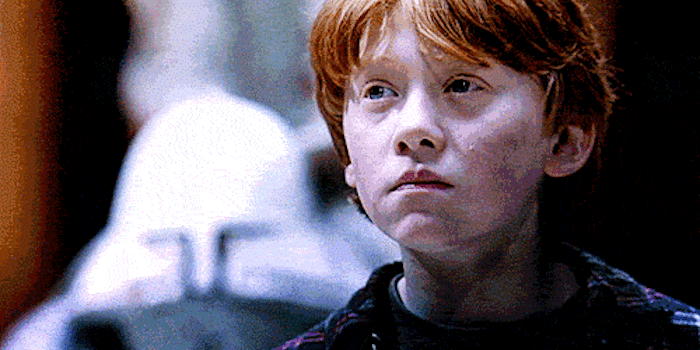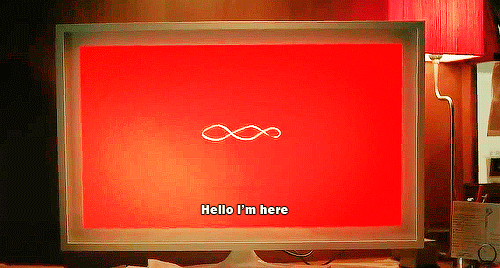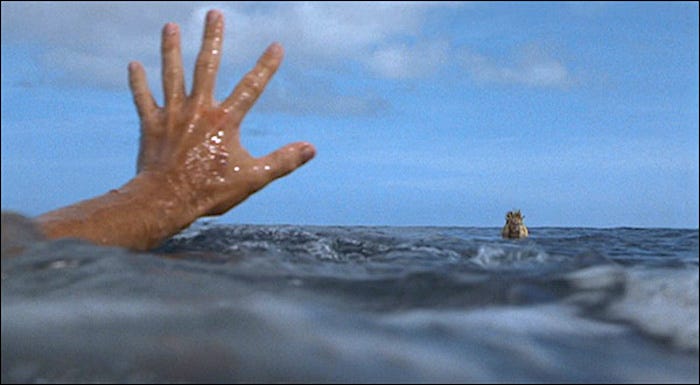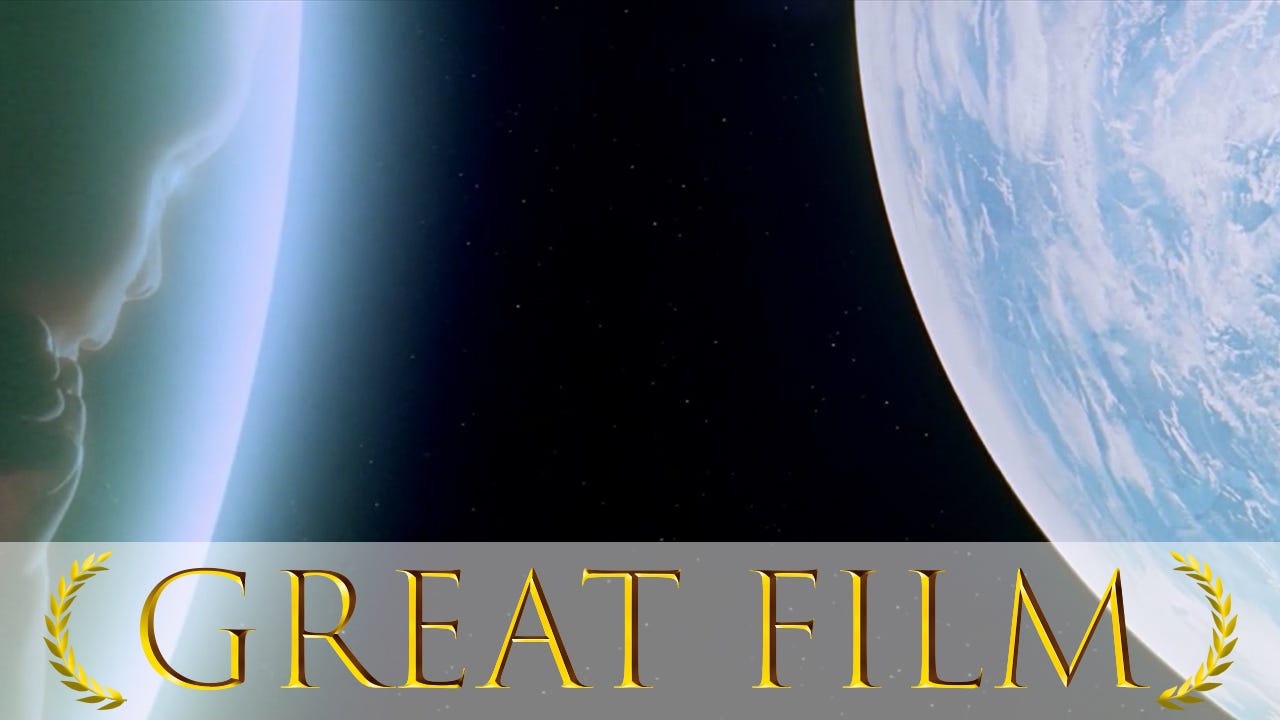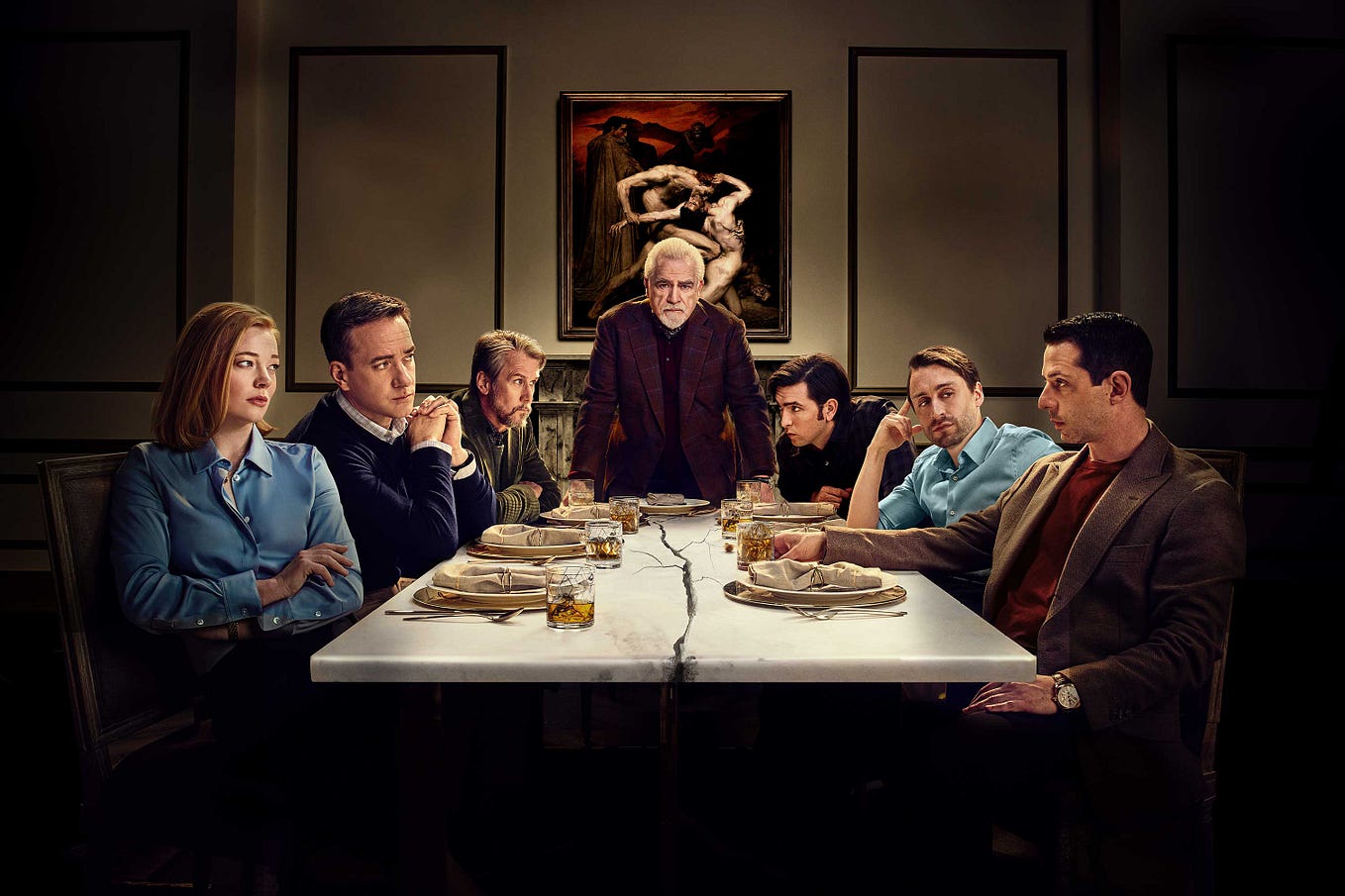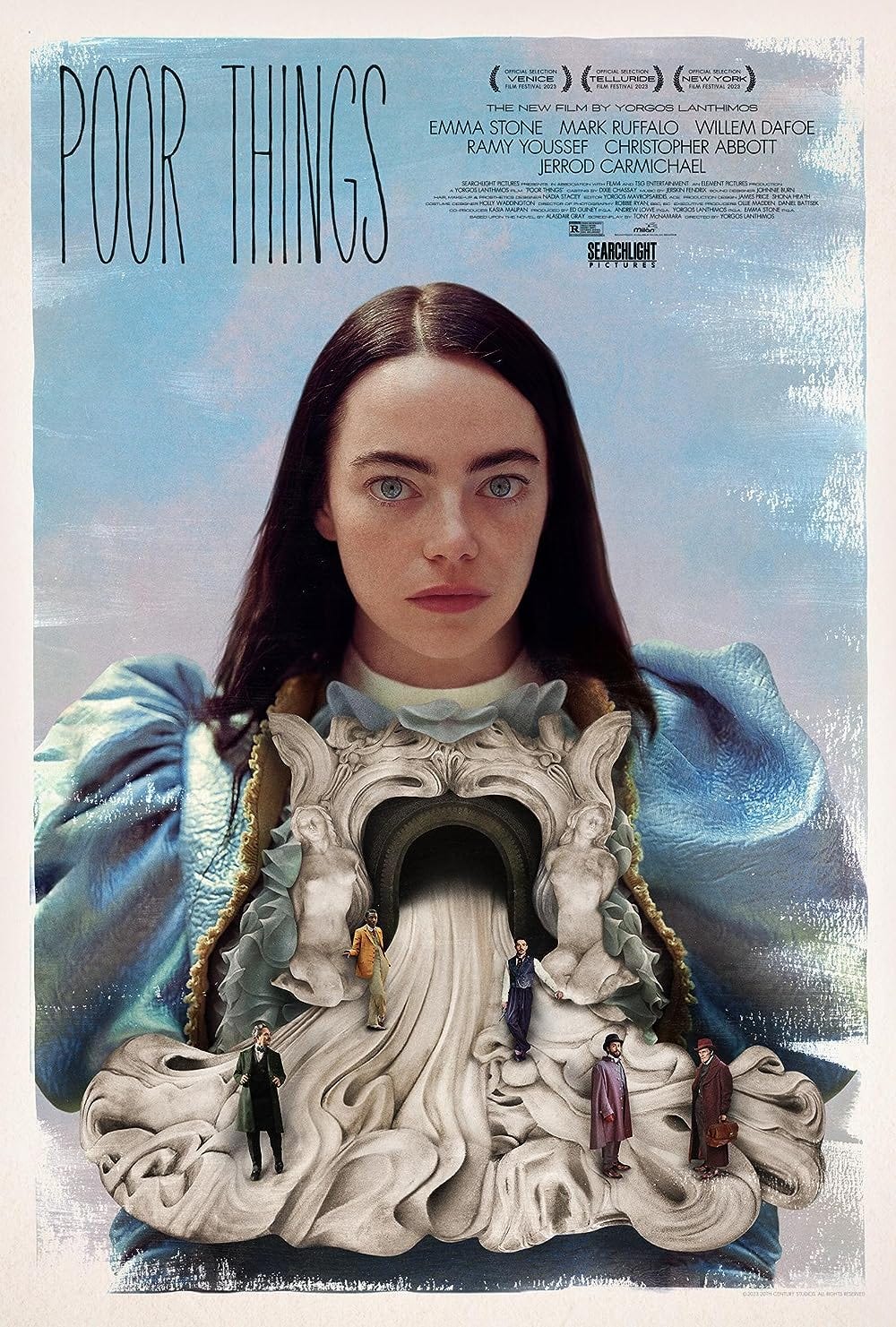Go Into The Story Interview: Kelly Marcel
My in-depth interview with 2011 Black List screenwriter whose movie credits include Saving Mr. Banks and Fifty Shades of Grey.
I was so impressed after reading the 2011 Black List script Saving Mr. Banks, I reached out to its writer Kelly Marcel for an interview. Kelly took time out of her busy schedule to do an email Q&A with me. It’s both informative and terrifically funny as she has a lively sense of humor.
The London-based writer wrote the screen adaptation of the novel Fifty Shades of Grey and co-wrote the upcoming movie Venom starring her longtime friend Tom Hardy.
Scott: Your father Terry Marcel has been a director and writer, both in film and TV. What influence did his work have on you becoming a writer?
Kelly: I think it was less his work and more his work ethic. His longevity in the business is extraordinary. He’s still producing at 71 years old, and I have a huge admiration for that. He has always created. Even when we were little he would draw pictures for us to color in, and they were so much more intricate and inventive than coloring books from the store. His influence on me has always been to believe in imaginary worlds and to live outside of the norm. At no point did he ever tell me to go out and get a 9 to 5 job. He always said: “There’s no such thing as impossible, there’s no such thing as can’t.”
His influence reaches into my screenplays as well. A few of the things Travers says in Saving Mr. Banks are words from my father’s mouth.
Scott: You had a stint as an actor and you sister is an actor as well. What lessons about writing did you pick up along the way through your acting?
Kelly: I learned the difference between written dialogue and say-able dialogue. What looks eloquent and smart on the page can often come out of a mouth as stilted and artificial. As an actor I tried to get my head around lines that felt peculiar in the mouth, so I am always on a mission to try to make every line as true to the character as possible and as easy to articulate as I can make it.
I am also aware of mannerisms. When I acted, I always felt like my hands and arms weren’t part of my body. They were these big flapping things with their own minds. If possible I will always try to specify physicality. With Pamela, for example, it was feet together, hands in lap a lot of the time.
Scott: As I understand it, you had a Tarantino-like approach to film education, working part-time in a movie video rental store and immersing yourself in movies. How important has watching and studying movies been to your development as a writer? What do you look for when you screen a movie?
Kelly: Working in that video store was my education. Nothing is going to teach you structure like watching endless movies and TV shows. Seeing what’s good and why it’s good. Seeing what doesn’t work and figuring out why it doesn’t. I was immersed in film for 12 hours a day, 5 to 6 days a week and it is the most significant part of how I learned to get from page one to page 110.
I don’t look for anything in particular when I screen a movie. I’ll watch anything and everything. Like everybody else, I want to get lost in it. I want to be taken on a journey. I want to be told a story, to learn something, to feel an emotion, to be entertained.
Scott: What are some of the movies that have been the most significant to you?
Kelly: Goddammit, Scott! Seriously? This is always such an impossible question to answer because every movie is significant in its own way. Okay if I had to choose a bunch — Harvey (sod off Craig Mazin, it’s MY favourite — Craig thinks he knows everything about Harvey. He is wrong.)
Harold and Maude and Being There also rank as movies I could watch over and over and over again.
I was fed on a diet of old black and white movies and a lot of musicals by my dad in my formative years, so I’m going to go with: Showboat, Seven Brides for Seven Brothers, Some Like It Hot, Citizen Kane, Gone With The Wind, Princess Bride.
We were always screening movies he’d worked on when he was a first AD so all the Pink Panthers, Straw Dogs, The Duelists, The Carry On films. Some of which should have been off the menu for a kid, but there was never a moratorium on what we could watch at any age in our house.
And then there’s ET! Fucking ET! Oh my god! Bugsy Malone!
In my teens and 20’s I was all about The Goonies and pretty much everything John Hughes made. The Godfather, Silence of The Lambs, Spinal Tap. God, I’m just listing movies now. I’m gonna stop. This is a preposterous question.
This year the movie that’s shouted to me more loudly than any other is Her. I fell in love with it completely.
Scott: You are also co-artistic director of “The Bad Dog Theater Company” founded in 2010 along with actor Tom Hardy and fellow writer Brett C. Leonard. How did you become involved in that and do you continue to write plays?
Kelly: I met Mr. Hardy whilst I was working on a staged musical version of “Debbie Does Dallas” for the Edinburgh Festival, and we were immediately simpatico. Both of us were interested in developing a space where actors who were not working could flex and hone their craft between jobs. We started out at the Latchmere theatre in Battersea - opposite the video store I worked in. Tom could often be found behind the counter with me, hatching plans for our endeavor and handing out DVD’s. In the midst of developing what would ultimately become Bad Dog, Bronson came along and took Tom away. Shortly after he started filming, it ran into a bit of trouble, and I went up to Nottingham to rewrite for him and Nic Winding Refn. Bronson became what it did and propelled Tom across the pond, followed in quick succession by myself, and so Bad Dog took a bit of a back seat. However, Tom was over just the other week, and we both have plans to take time off in the near future and kick start
our company. I would imagine that our first play will be a collaboration by all three of us. Though Brett is the one of us who is the SERIOUSLY talented playwright, so I’m a little bit scared to go toe to toe with him.
I do still write plays. They are all half finished!
Scott: After some success as a writer in England, your transition to Hollywood involved selling a project that became the TV series “Terra Nova.” Could you describe how that deal happened and what it meant to your career?
Kelly: Blimey, here’s where I bore everyone to death. The “Terra Nova” thing was all a bit bonkers. I had finished Bronson and Tom and I had sold two TV pilots that we had somehow managed to write during that time as well. Off the back of those sales and Bronson I got my British agent and then bombarded her with scribblings. Two of the outlines I gave her were TV show ideas — one was “Terra Nova,” the other was for a show called “Westbridge.” She immediately jumped on “Terra Nova,” which I have to admit was my least favorite idea, and sent it to an agent turned producer out here in LA called Aaron Kaplan. He called and told me to get on a plane because I was going to pitch it to networks immediately. I thought everyone had gone stark raving mad, but I gathered up some pennies, jumped on a plane and went to stay at the stunningly gorgeous Oakwood apartments in Burbank. Aaron introduced me to a writer called Craig Silverstein who joined me on the project and helped me craft the pitch and off we went to sell our wares. Never in a MILLION YEARS did I think we’d sell it, but we ended up with offers from competing networks in the very first week, and then, incredibly cheekily, I decided to pitch “Westbridge” and sold that too.
Bonkers right?
Once we decided to go with FOX, Craig and I wrote the pilot via Skype (I was back in England and back at the video store.) Aaron called one night and said that Steven Spielberg was reading it and I was like “don’t be ridiculous you silly man. You’ve been drinking the silly tea.” But, Steven came on board as the producer and FOX decided to go straight to series. BONKERS! And then came a really hard decision: Should I stay with “Terra Nova,” which was rapidly turning into something very different from the show I had created? Or stay with “Westbridge,” which looked very unlikely to go to series? I decided not to continue with TN and so the wonderful, beautiful Brannon Braga took over on TN and I stayed at the video store because “Westbridge” did not in fact go to series. Either way though, I couldn’t have stayed with Terra Nova; it wasn’t what I had initially dreamed up, and I knew that writing something I couldn’t find a voice for would potentially stop me writing altogether. It was during this period that Saving Mr. Banks came into my life, so looking back, the best decision I ever made.
Scott: Let’s talk about your movie Saving Mr. Banks. Here is the IMDB plot summary:
“Author P. L. Travers reflects on her difficult childhood while meeting with filmmaker Walt Disney during production for the adaptation of her novel, Mary Poppins.”
The movie stars Emma Thompson as Pamela Travers, the author of “Mary Poppins,” Tom Hanks as Walt Disney, and Colin Firth as Pamela’s father Robert Travers.
How did you get involved with the movie’s producer Alison Owen and what was the genesis of the project?
Kelly: Alison had read the “Westbridge” pilot and had aggressively pursued me ever since. There were lots of ideas that were floated about but nothing that had made me jump up and down. And then finally, she asked me whether I had any interest in Mary Poppins, and I can’t remember what she said after that because she had me at Poppins.
In short, there was a script that had been knocking around for a while by an Australian writer who had been commissioned to write a film about PL Travers’ life based on a documentary called “The Shadow Of Mary Poppins.” Alison thought there was something interesting in there that she couldn’t quite leave alone. I felt the same.
Scott: What was it that made you think this would make a great story?
Kelly: I loved the idea that this sweet film, this huge part of all of our childhoods, was born out of terrible tragedy. I was taken with the idea of redemption and the effect that our parents can have on us all the way into adulthood.
Scott: The script Saving Mr. Banks made the Black List in 2011. What has that meant to you both personally and professionally?
Kelly: Both Alison and I will tell you that The Black List was a MASSIVE part of helping get this film made. It was being on that list that brought people’s attention to SMB. After the Black List, a whirlwind of attention arrived and very quickly built a hype around it. We all owe a great deal to Franklin and everyone involved in the Black List, and I cannot underestimate how important it was in the process of getting Banks noticed and into the hands of the people who would eventually give it life.
Scott: The script is notable not only for the craft that went into writing it, but also many of its many creative choices which run counter to Hollywood’s conventional wisdom. For starters, the standard advice of agents or managers is for a writer to put out a spec script that can appeal to as many buyers as possible, yet Saving Mr. Banks is a story where there is only one potential buyer: Disney. No one else could touch a project that stars Walt Disney and features one of the company’s most beloved movies Marry Poppins. Could you describe your thought process in deciding to take on this project despite the extremely long odds against it ever getting sold, let alone produced?
Kelly: I was incredibly naïve. I never ever considered that it could only get made by Disney before or during writing it. I just wanted to do it. I loved it, I wanted to write it, and that was that. It was only afterwards that I thought: “Oh fuckitty shitballs! This ain’t EVER getting made. Oh well, it’s a nice sample. Onwards.”
Luckily, Disney had other ideas; they embraced the script and moved very quickly to buy it and make it. And that’s also when I stopped saying “fuckitty shitballs” because you can’t say that if you work for Disney.
Scott: Disney not only bought the script, they made the movie. Is it fair to look at Saving Mr. Banks as a testament for writers to pursue stories they’re truly passionate about, no matter the odds?
Kelly: 100 per cent. 100 million gazillion per cent. And a million gazillion doesn’t even exist but that’s how much I think writers should only pursue stories they are passionate about. I say this from experience. I say this as someone who has written things I am not fervent about and they are 100 million gazillion per cent SHIT.
Scott: Another thing: Saving Mr. Banks is a period piece, taking place between two time periods, 1906 and some five decades later. Conventional wisdom in Hollywood is that period pieces are both harder to sell to audiences and add costs to the budget due to costumes, sets, and so forth. Did the concern of writing a period piece ever cross your mind?
Kelly: Gosh. Is that so? I didn’t know that so, no. Oops, writing a period piece right now! Bugger. Oh well, don’t care! I’m all about making it as hard for myself as possible it seems.
Scott: One hears constantly in the halls of Hollywood: Create a sympathetic protagonist. Yet the Pamela Travers we meet and get to know in Act One seems to do pretty much all she can to put off people around her. Were you at all concerned when you were originally writing the script, you’d get this script note: Make Pamela more sympathetic? Did you ever receive that note?
Kelly: I never ever received that note during the writing of the script. Alison trusted me to let it unfold. However, I did have to give the note to myself. Not that I wanted PL to be more sympathetic but that I felt we needed to see a tiny shard of light, a sliver of humanity and that’s how Ralph came to be. He was a very very late addition to the script. I had finished the draft and it still didn’t feel right to me. Her core felt like it remained unseen. I needed someone to like her, and Ralph did and could, because he simply didn’t see her darkness, so overwhelmed with the darkness in his own life was he.
Scott: One of the dynamics that is so delicious in the story’s setup exists precisely because Pamela has such a stern, joyless persona and that is the expectation of her iceberg colliding with Disneyland, the Happiest Place on Earth, and its founder Walt Disney. How important was that dynamic to you in developing Pamela’s character and the story’s set-up?
Kelly: I didn’t really think about the dynamic in that way. I don’t believe that the soul of Disney was the happiest place on Earth either. I was much more interested in the idea that these two people would eventually find out they were the same. They had just chosen different paths. Different ways of dealing with past pain and moving forward whilst still clutching onto it. Disney had clearly found the better, healthier way, but both of them were defined by what happened to them in their formative years. They just couldn’t see it in each other until everything was on the line for both of them.
Scott: One other narrative element in Saving Mr. Banks that cuts against conventional wisdom: the use of flashbacks. In your script, you not only use flashbacks, you embrace them as an essential story device, by my count employed at least a dozen times. Could you delve into your rationale for framing the narrative cross-cutting between these two timelines: The adult Pamela circa 1960 and the young girl Ginty in 1906?
My thought was that the dual timeline construction served to introduce, explore, then ultimately resolve a mystery: How did the innocent, fun-loving young girl we meet as Ginty become the hardened character we get to know in the adult Pamela?
Kelly: The upshot of the whole story depends on us knowing what happened to Pamela in her childhood. It could not be done any other way. The hard part of it was to make it feel like the flashbacks were part of a whole movie and not a singular film in their own right.
Pamela’s whole life was affected momentously by the death of Travers. She could not find a way to bring meaning to his demise. She couldn’t forgive herself for not saving him and so journeyed to another world to find relief. But even in creating a magical nanny, she could not find the closure she needed. We had to understand the smaller her so that we cared about the bigger her’s catharsis in the end. We had to earn it with her.
Scott: So in a way, there is a story within a story within a story: There is the overarching presence of “Mary Poppins” as written by Pamela Travers; the narrative of how that story went through script development at Disney; and the narrative of Pamela’s past focusing on the relationship of Ginty and her father, a creative but deeply troubled soul. What were some of the challenges you had as a writer in balancing all of those narratives?
Kelly: As above, it was very hard not to make it feel like all the stories were their own little tales. It was imperative that they spoke to one another. The challenge was in making sure the emphasis was never in one place for too long and that each timeline had its own merit. That each moving story part impact the next moving part and caused a domino effect, keeping the story moving forward at all times. It could never be still, until the monologue at the end. I was concerned that we would wish we were in another timeline when we were in the one at hand, that the Disney story didn’t overwhelm the Australia story and vice versa. Each had to keep us wanting more.
And yes, it was a total bugger to achieve. If anyone heard wailing and a head banging against a wall in a shed in a garden in Twickenham at that time, then it was most probably me.
Scott: Your script has lots of visual-to-visual transitions from present to past, past to present: Train to airplane; sunlight in LA to sunlight in London; Pamela on the balcony of the Beverly Hills Hotel, arms outstretched to Ginty on the porch of Allora, arms clamped around her body. How focused were you in the original script with those type of transitions or does that reflect working with a director? How mindful ought screenwriters be about scene transitions and in a sense directing and editing the movie on the page?
Kelly: Those transitions were all on the page. Here’s an example of what they looked like:
She throws open the balcony doors for fresh air and is greeted with dry arid heat, dust, dazzling sunlight--
EXT. GOFF HOUSE - ALLORA — DAY
--Arid heat, dazzling sunlight. Travers, Margaret and the children stand in a line at the top of a pathway.
I would often use the same words to go from one timeline to another. However, John Lee did something brilliant, which is very subtle and hardly anyone notices, but almost always we are seeing windows or curtains. He uses them like book jackets, in through one, out through the other. And I think this device helped us transition enormously. It’s all very well to put a bunch of words on a page to emit a feeling of seamlessness, but it is an entirely different thing for the filmmaker to execute it. I have to say that way the changeovers in the film work is entirely John’s doing. He got a flavor of what it was supposed to do from the script, but he and John Schwartzman (our DOP) were the ones who had the painful task of figuring out exactly what that looked like. We could never say it. We didn’t want to use tag lines to explain where we were each time, and so the pair of them had a big task in turning words on a page to a visual cue every time. They used the windows and subtle changes in contrast and color. I think what they did is beautiful, and they blew me away every time they came up with a means to inform us visually what could have become very clunky story telling.
There are myriad ways in which JLH used visuals in place of dialogue. One of his ideas, and the one I love the most, is when PL tells the Sherman brothers to un-make up words that aren’t real. He had Jason Schwartzman hide the sheet music for Supercalifragilisticexpialidocious. It’s hilarious and says it all, and that’s why John Lee is John Lee and I’m the luckiest person in the world that I got him as the director. It cannot be said enough that no matter how good anyone thinks a script is, if you don’t have the right director - a person who will love it and own it as much as you have up to this point - then you are completely screwed.
Scott: When we meet Pamela, she has agreed to travel from her home in England to Hollywood to participate in meetings with the Disney creative team involved in adapting “Mary Poppins.” However, Pamela is extremely reluctant to do this, only her dire need for money compelling her to make the deal. I’m wondering, too, is part of her hesitation tied to a fear that by delving into the story of “Mary Poppins” once again, she will be forced to revisit the painful past with her own father?
Kelly: No. I don’t think she is aware enough to know that she created this character as a shield from her own pain. I think it is as a result of being in a foreign country, jetlagged, alone, crazed and misunderstood that her past comes back to haunt her. This thing that she has created and poured her soul into is being dismantled and in the disassembly so too is she becoming undone.
Scott: Even though Pamela is a gruff, no-nonsense character, one of her most entertaining qualities is a quick wit. For example, this exchange:
PAMELA: (to Dick) What is wrong with his leg?
DICK: He got shot.
PAMELA: Hardly surprising.
How much fun was it to capture and express Pamela’s sarcastic, biting voice?
Kelly: HA! She’s such a cow! I loved writing her. It’s wonderful to be able to say anything and do anything with a character and not worry that people will hate her because they bloody well should at certain moments. She’s the most fun I’ve ever had with a character.
Scott: Much of Pamela’s biting wit and at times vitriol emerges her script meetings with the Disney screenwriter and songwriters. I’m wondering if you had any special fun with those scenes seeing as you’ve doubtless had your share of script notes meetings?
Kelly: Indeed. I maayyyyyy have used personal experience in writing some of those scenes. I’m not a shutter upper in those kinds of meetings; I’d love to say that I am full of grace and decorum, but no.
Scott: There are so many wonderful grace notes in your script, for example a big stuffed Mickey Mouse doll which becomes a sort of barometer to visualize how Pamela is feeling toward the whole Disney project. Was this based on some anecdote you discovered in your research or did you create the doll out of whole cloth?
Kelly: The Mickey Mouse toy and his journey started with him just being on the bed when she comes into her hotel room and then, when looking for some softer moments, he became integral. His shining moment comes when she takes him to bed. God, this is gonna read a bit weird for the people who haven’t seen it. Yeah, she takes him to bed and falls in love with him and they get married and that’s when we realize she is a human and a mouse, just like all of us. You’re a human and a mouse right? Is this just me? I might have gone a bit mad at this point.
Mickey and Ralph are really the only friends that PL ever has.
Scott: One of the most charming characters in the story is Ralph, played by Paul Giamatti, who is Pamela’s limo driver when she is in Los Angeles. He demonstrates enormous patience with Pamela and they develop a special kinship. He comes off as a sort of mentor figure, his sunny disposition despite his own personal family challenges a positive influence on Pamela. Could you describe how you see Paul’s character in terms of his story function and why you included him?
Kelly: See above for the story of Paul’s character.
Tidbit: he is the only character in the film that didn’t exist in real life. Like Mary Poppins, he flew in through the window one day and saved the script.
Scott: Perhaps the central theme of the story is implied in the title itself: Saving Mr. Banks, referring to the father character in “Mary Poppins,” but symbolically representing Ginty’s father, who was also a banker. Could you touch on what is going on psychologically with regard to Pamela in relation to her father as she endures the script development process with Disney?
Kelly: Psychologically, she is struggling to let go. She associates her own father with Mr. Banks; she is breaking down and realizing that she has created a fiction of Travers that she now cannot bear to see as a character through anyone else’s eyes. He was everything to her, and so Mr. Banks is everything to her now. But Disney as Disney’s own salvation, his own homage to the father that had caused him such pain, has also adopted Mr. Banks, the character. It’s a fight over this one man. They’re battling over their legacies subconsciously, and neither one of them can bear to let Mr. Banks be what he needs to be, which is simply Jane and Michael’s father.
Scott: Walt Disney has to go through his own psychological journey in that over time, he comes to understand what “Mary Poppins” really means to Pamela, how it is tied to the redemption of her own father. In fact, at the movie’s most critical moment, Disney has a monologue in which he has to sway Pamela and he says about the proposed movie version of “Mary Poppins”:
In every movie house, all over the world, in the eyes and the hearts of my kids, and other kids and their mothers and fathers for generations to come, George Banks will be honored. George Banks will be redeemed. George Banks and all he stands for will be saved. Maybe not in life, but in imagination. Because that’s what we storytellers do. We restore order with imagination. We instill hope again and again and again.
Two things. First, given the fateful nature of this moment, how difficult was this monologue to write? Second, how much of that last point — “That’s what we storytellers do… restore order with imagination… instill hope again and again” — reflects your own attitude about your role as a writer?
Kelly: Writing Tom’s speech about his dad was very very tricky. How could I say the words that would allow PL to give up her precious creation? He had to be convincing, he had to tell her something that would unlock her. She had to know he understood.
Not that they would ever be pals, but that he knew. He knew how hard this thing was to do. That he felt her pain. I don’t know how that got done. The little boy in the snow was all I had; I knew I wanted to build it around that. It happened over a period of days. I wrote everything I wanted to say, it ran to 17 pages or more and then I cut it down and then I threw it all away and then I started again. One night, late, it just metamorphosed on the page. Talking about writing that speech is hard, because I don’t know how it came. It just unfolded from a mish mash of thoughts and half-sentences.
Scott: Here’s an off-the-wall observation: Compare Pamela to Clarice Starling in The Silence of the Lambs. Both were young girls ‘victimized’ by the traumatizing loss of a father, and the psychological point of their respective stories is to confront and deal with the unfinished business of those deaths. Clarice has to kill Buffalo Bill in order to ‘redeem’ her father’s death. Pamela has to allow the movie to go forward, as Walt Disney points out, to ‘redeem’ her father (via Mr. Banks). Again totally different genres and tone, and one story involves destruction at the end, while the other’s climax is about creation, yet the net effect (psychologically) is pretty much the same: Both Protagonists have in effect confronted, then moved through the pain of their past and can now have a ‘new’ life in the present.
Kelly: Woah! That’s deep! Yeah! Silence of the Lambs. It’s exactly that. I’m gonna take this analogy and run with it and tell everyone that that’s what I meant to do, that I totally saw that comparison from day one and you ain’t gonna tell no one you came up with ya hear? I’ma hurt you bad if you do.
Scott: Saving Mr. Banks soon will be rolling out in thousands of movie theaters across the United States and around the world. You wrote and rewrote the script, you’ve tracked the project’s development from pre-production through post, and now you’ve seen the movie and heard the crowds react. If you had to choose one word to describe what you’re feeling about the entire Saving Mr. Banks experience, what would that be?
Kelly: Grateful.
Scott: There are some other high profile projects you’re involved with including The Little Mermaid, based on the Hans Christian Anderson story with Joe Wright attached to direct. What’s the latest on that?
Kelly: Little Mermaid is still in progress. Joe is a genius and Working Title are wonderful people to work with so yeah, you know how long these things take to figure out. It’s still an ongoing project and one that is so bold it hurts my brains when they show me how they’re going to make it work. What I can say is that it’s a much darker take on it than we have seen before and it’s all live action.
Scott: Of course, I have to ask about Fifty Shades of Grey, which you were the first writer chosen to take on the adaptation of that hugely popular book. What were some of the biggest challenges you faced in writing that project?
Kelly: Well, it was quite difficult to write the sex stuff because I am a virgin, so I don’t know anything about what happens in the birds and bees department. Luckily some very nice people told me all about it. There’s some kissing and such and then someone sits on a rabbit or maybe it’s a duck, I don’t know but then you rub a bald man’s head and you either get pregnant or you get some flowers. So hopefully what I’ve written will ring true.
Scott: Do you have any plans to explore TV again or are you satisfied just now to work in feature films?
Kelly: I do I do! Get this! Westbridge came back around and we are finally getting to make it. The good ole BBC stepped up, and I start work with Tommy Schlamme — who I developed it with — next week. It’s so nice to be back working with him. We spent a lot of time together developing the pilot and took a trip to Texas to research it, so it feels like coming home to be able to rejoin him and his producing partner Julie.
Scott: Some craft questions. How do you come up with story ideas?
Kelly: I don’t know. Hmmm. Good question. They just come into my head. Normally triggered by something I see or read or something someone says. A lot of ideas spring up from things that have happened in my life. In fact, I want to write about an experience I had at the Austin Film Festival. Maybe you’ll be in it!
Scott: How much time do you spend in prep-writing (i.e., brainstorming, character development, plotting, research, outlining)? Which of the aspects of prep do you tend to devote the most time and focus to?
Kelly: Research. That’s it. Much to some people’s chagrin, I don’t outline, and it drives them nutso. But I don’t. I cause myself a lot more work by doing it the way I do it, but I often let the story tell me what it’s going to do. I am sort of coming round to the idea that outlining might be helpful, and I think I may have to do it on one of my next projects because I am going to write it with someone else and they are a stickler for outlines (because they are boring and anally retentive), but yeah, I’m gonna cave.
Did I answer the question? Which aspects do I--yeah, research? Oh and making playlists! And finding pictures/objects but I’m about to into that below.
Scott: How do you go about developing your characters? Any specific tips or tools you find yourself using regularly?
Kelly: With Banks I was lucky in that they preexisted, so they were kind of drawn out for me. I surround my computer with pictures of my characters. If they exist then I use the real people - Walt, PL, Richard. If they don’t then I’ll find pictures of what I think they look like and do that instead. Once I have a face I can imagine all sorts of things onto it. Then sometimes I will find odd things in old junk stores and think “Oh, Ralph would have that.” So I’ll buy it and put it by the picture. I end up with a desk full of bits and pieces by the time I finish writing something--it’s chaos.
Scott: What about dialogue? How do you go about finding your characters’ voices? How can a writer develop their ability writing dialogue?
Kelly: Say the words. Say them out loud. Do they sound like a real person speaking? Yes? Now speak them again, do they sound like the character talking? Would this person use that word? Would that person lose the ends of their sentences? Nobody has the same cadence or tone. I don’t say ‘awesome’ the way Walt would say awesome. PL would never say awesome. Be true to the voice. Was the person brought up in a hot climate? Then they probably speak slowly, conservatively, in a drawn out way. What words sound good when drawn out like that? Dialogue and not having it feel like it’s you talking is hard. When working on 50, E L James used to say to me all the time ‘I can hear you saying that!’ and she was right. Trying to divorce oneself from one’s own way of speaking is hard, but I think that’s the most important ability to hone.
Scott: How would you define theme? How important is it? Do you start with themes or do they arise in the context of developing and writing the story?
Kelly: I’m personally a big fan of knowing what your theme is before starting. I think they can arise as you tell the story, but writing within and for a theme seems to me to help the process along. It allows for much more intricate storytelling, ways of speaking to the theme and letting your theme to speak to you, even unconsciously.
I said ‘theme’ four times in that last paragraph. I shouldn’t be allowed to be a writer.
Scott: What do you think about when writing a scene? What are your goals?
Kelly: Mainly lunch. Then dinner. Then bed. Bed is always my goal.
Every scene has to be doing something. It has to be moving the story along, peeling off a layer of the onion so to speak.
The goal in its simplest form is to be further along in the story, to know more, to understand something better at the end of the scene than when you started. If your scene isn’t doing any of that, then it’s just there because it’s pretty. Cut it.
Scott: What keys do you have to write entertaining scene description?
Kelly: House keys, garage keys, car keys. Or qwertyuiop and all those fiddly ones underneath. Seriously?
Write it short, then halve what you wrote, then halve it again.
Brian Duffield is incredible at scene description. “Jane Got a Gun” is a master class in how to do it beautifully, effectively and economically. When anyone asks me about prose in a screenplay, I point them at that script.
Scott: When you finish a first draft, you are faced with the inevitable rewriting process. Are there some keys you have to rewriting your scripts and if so what are they?
Kelly: I actually prefer re-writing. The first draft is always this crazy messy bastard (because I don’t outline), and my favourite part is going through and slashing that bastard to pieces.
Perhaps I should have asked if I could swear in this thing before I started writing. Too late now!
Yeah. Rewriting. Great fun. Be harsh with yourself, do you really really need that line? That scene? There were a couple of scenes in SMB that I knew had to go because they truly weren’t needed but I hung on to them and hung on to them until JLH literally had to pry them from my clenched fists. He was right and never once have I thought about them or missed them whilst watching the movie.
Scott: What is your actual writing process?
Kelly: I have been prescribed a new writing process. It used to be -- don’t do anything until it’s nearly deadline time, then panic and write as fast as you can. Now, I am supposed to write 3 hours a day, doesn’t matter which three hours, just three hours whenever. So far I’ve managed to make some really nice dishes from this really good cookbook, gone for some great walks with my dog and I’ve had a manicure. So yeah. I guess I am not a process person.
I write at home.
I sometimes listen to music (I always have a playlist for every film I write), depends on scene.
I am constantly hopped up on caffeine. What is your single best excuse not to write?
I don’t feel like it. I’m no good at it. The dog needs walking. Cake.
Scott: What do you love most about writing?
Kelly: FADE OUT. That’s what I love most about writing.
Scott: Where do you see yourself in 5-10 years? In an ideal word, what are you doing?
Kelly: Oh bloody hell! I don’t know! Erm…raising llamas on a farm somewhere? Running a company that gives away free monkeys? Wearing an Elvis jumpsuit all day? All I know is that I hope I’m no longer a virgin.
Scott: Finally, what advice can you offer to aspiring screenwriters about the learning the craft and breaking into Hollywood?
Kelly: Listen to John August and Craig Mazin’s Scriptnotes podcast.
Read a lot then read more.
Watch everything.
Write a lot.
Join the Blacklist.
Make friends with other writers (they’re gonna tell you the truth).
Don’t shag celebrities, producers or directors.
Don’t become a hermit. Ideas don’t come to you when you sit around on your own.
Kelly is repped by WME.
Twitter: @MissMarcel.
For more Go Into The Story interviews with screenwriters, filmmakers, TV producers, and industry insiders, go here.

